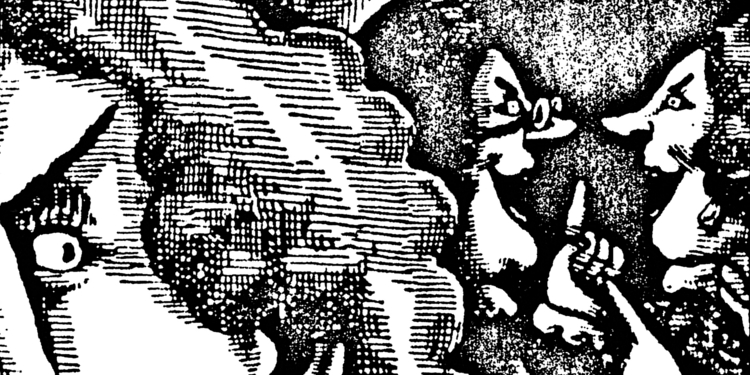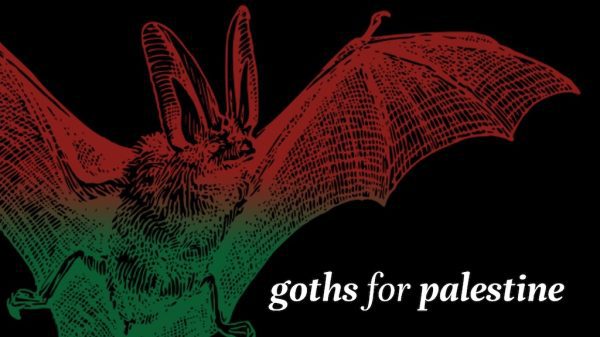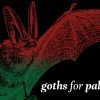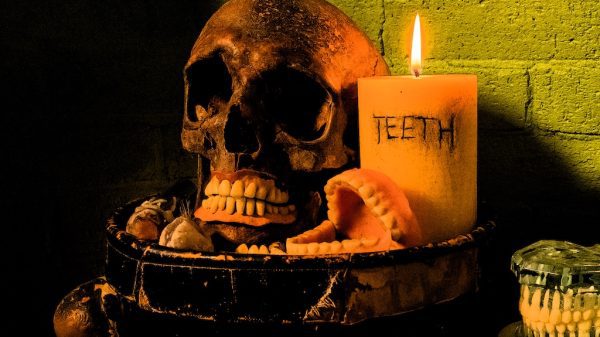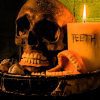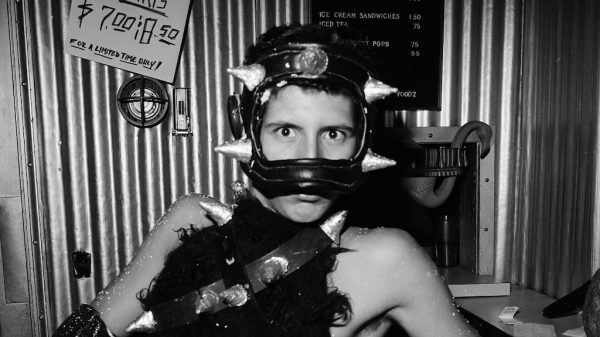For the true, Sad Lovers & Giants is one of THE bands when talking essentials in goth and post-punk. Yet, despite your cult following, a fair amount of details regarding your early existence remain in relative obscurity – something which will hopefully be remedied by this interview.
To begin, I’d like to take a look at the earliest days of the band. I know that it’s a broad question, but what were the circumstances surrounding your formation; what brought you together, and what was the initial spark that got you started?
Garce: I was in a band called Suspect Device, playing guitar and doing backing vocals and we played with The Traumatics at a gig at my school. The Traumatics had Tristan Garel-Funk on guitar, Dave Wood on tenor sax, Nigel Pollard on drums and Steve Carter on bass. Dave and I used to drink in the same pub, The Feathers in Rickmansworth. The Traumatics had done a four song recording session at a studio in Luton and the owner of that studio really liked their best song 50:50 and had talked about ‘singing’ them. Dave asked me to come along to a rehearsal and try out as a singer which I did and that’s how it started.
Although before this we had been in different bands, the spark that got us going had been punk music with its energy and subversiveness. You have to remember that before punk, the music of the day was for people with long hair and very serious expressions, and to get into a band you had to be a really good musician – I wasn’t a good musician, but with punk I didn’t have to be.
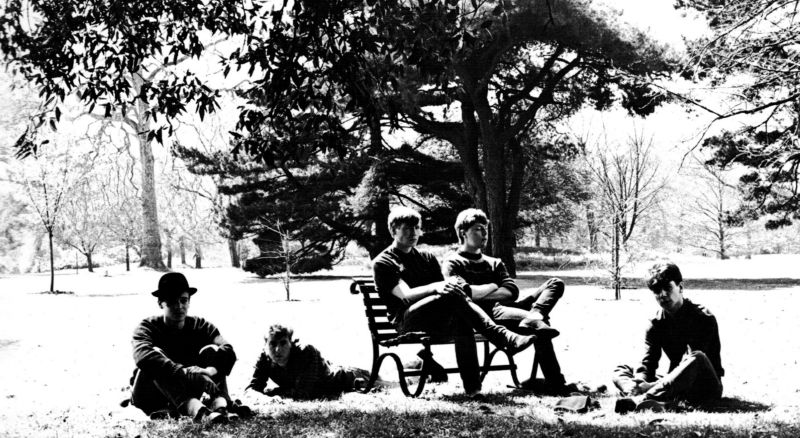
From SL&G’s Website Gallery
While many of your contemporaries were playing with similar sounds, your music stands out as instantly recognizable; your use of ethereal soundscaping, combined with catchy, memorable tunes and a dark, brooding atmosphere – all funneled through a primal and poignant primitive post-punk presentation – makes you easily distinguishable from your peers. When you first started writing music, what helped to influence your arrangements and aesthetic (musically and lyrically)?
That is a very good question which is difficult to answer without a long explanation so here goes! When The Traumatics first started out, we were playing fast, choppy songs like 50:50, but we gradually evolved into playing the darker, more atmospheric songs you mention. Obviously, as I was the singer and wrote the lyrics, my thoughts and influences have a bearing on the lyrical content and style and I had always liked poetry so that was an influence. But one of the things about many post Joy Division bands was that they didn’t write happy, three-minute pop songs; the subject matter was altogether darker and that subject matter suited my rather negative outlook perfectly. Musically it’s a lot harder to pin down. We all listened to a tremendous amount of music and the main song writers in the band have obviously driven the direction the band has taken musically. Both Tristan and Tony like melodic, atmospheric songs and that has been important. In the early days there were many bands releasing melodic, atmospheric songs, I wasn’t the songwriter, but I remember hearing A Forest by The Cure and thinking, “my God, I want to be in a band that plays songs like that.” Getting our first string synth was hugely important because it changed us from being a post-punk band to being Sad Lovers & Giants, and shortly after that we changed the name because The Traumatics didn’t suit the music we were playing anymore.
Perhaps the most interesting question you might ask about our musical style is how we decide what counts as a SLAG song nowadays when we are writing material 35 years later. We have about 15 songs at various stages of completion ready for our next album, but there have been others that we play and say, “nah, it’s not a SLAG song” and we all pretty much agree. The thing that has changed over the years is that we aren’t really influenced by anybody else’s music, we don’t need any external references, only our own slightly weird, internal aesthetic, which has become comfortably road worn over the years.
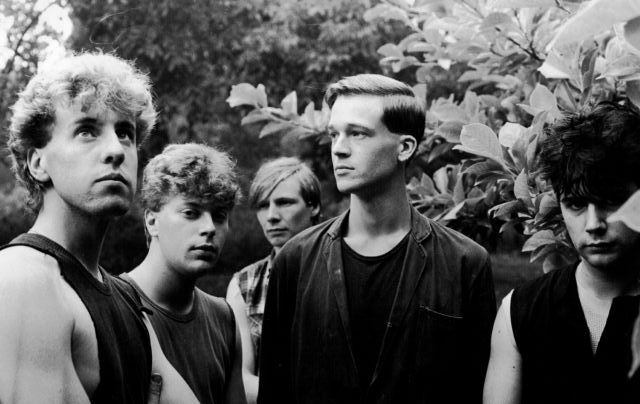
From SL&G’s Website Gallery
Of all your songs, one in particular has always stood out to me as being deeply personal in a very blunt, biting, and bellicose way – that song is “Clint.” What’s the story behind that track; where did the title come from, and what experiences fueled it?
I actually can’t remember what inspired Clint; I remember we had a phase of the band coming up with titles for songs and then we’d write the music and then I’d go away and come up with some lyrics to fit the title. Clint was one of those, so was In Flux, Your Skin & Mine, Man of Straw and Alice isn’t Playing; I enjoyed writing lyrics like this because it stretched my imagination to encompass ideas I wouldn’t normally have included. I don’t explain my lyrics because that would spoil it for the listener; part of my art as a lyricist is to provide a hint of narrative and then leave it to the listener to finish the story in their own head. Public Art should always be participative because our imaginations are far richer than anything any artist can produce. I just set the scene; the truth about Clint and where he is and why he feels so betrayed is in your head.
While on the subject, “Clint” was one of the two tracks you contributed to the iconic compilation, The Thing From The Crypt (I Nearly Died Laughing) – the other being “Take Me Inside.” How did that compilation come together? All I really know is that it was a collaboration between various labels, including Nick Blinko’s Outer Himalayan Records, Paul Mex’s Dead Hedgehog Enterprises, and your Last Movement label; and that it featured bands with members who were also involved with Rudimentary Peni, The Magits, Solid Space, Ritual, and Sex Gang Children, among others.
Your question about the Watford scene in the early 80’s is a complicated one to answer. I meet up with Paul Mex for coffee quite regularly and we often talk about it, whilst Paul became the focal point for the excellent Dark Entries re release of The Thing From The Crypt he was not the prime mover for the original record. The singer from Soft Drinks, Martin Cooper (aka Drooper) and our own guitarist Tristan Garel-Funk along with Kieron from The S-Haters were largely responsible (Kieron hand silk screened the original sleeves). It was a hugely ambitious project which actually worked and makes it look like there was a well oiled machine organizing it when in fact it was utter chaos!

Originally released by The Thing From The Crypt in 1981, reissued by Dark Descent Records in 2013
You’re from the same area as Rudimentary Peni, and you’ve shared members with The S-Haters and The Snake Corps – who featured Jon Greville from Rudimentary Peni on drums. Much of Rudimentary Peni’s history remains shrouded in mystery; can you tell me about whatever association you have with them; and are there any stories you’d be able to share? In addition, what connections do you have with The S-Haters?
There are many connections with the S-Haters; they were signed to the same label as us, Midnight Music, and Tristan’s brother Jim played bass for them (now the bass player with Snake Corps). At one point, I even went to one of their rehearsals with a view to possibly managing them. They were playing out of tune so I nipped out to my car and got a guitar tuner and they were slightly insulted when I suggested they tune up! It would never have worked, they were just too anarchic for a SLAG like me, but I’m still in touch with Kieron on Facebook. The S-Haters and SLAG will appear on a box set of 80’s Goth bands being released by Cherry Red today (check it out here).
The connection with Rudimentary Peni is personally more distant; yes, John Grenville the Snake Corps drummer is in Peni, but he was also in Soft Drinks with Drooper. Dropper and Nick Blinko also put out at least one single as The Magits before Nick started getting ill. I bought the first Rudimentary Peni single, which I thought was sheer genius – it’s not just punk, it’s highly layered and Nick has become known as a serious ‘outsider’ artist, which doesn’t surprise me; Rudimentary Peni are part of his art.
I wanted to review the single for a Fanzine and I wrote to him, much as you are doing here, with several questions. The answers I got back were so enigmatic, I wish I still had the letter.
I know that The Snake Corps formed in the wake of Sad Lovers & Giants’ initial breakup in 1983. What led to that breakup? And how did you come to reform?
The breakup of the first SLAG line up was sad, but many good things have come from it. We all got a bit jaded from constantly rehearsing, gigging and recording, and yet we had very little to show for it. The music press were very critical, most of us were also doing day jobs which were suffering, as were any relationships we managed to maintain. It felt like the world didn’t want to know us. The irony is that we split up before one of our best albums, Feeding The Flame, was released.
Tristan and Nigel carried on and recruited Mark Northcott Lewis as a replacement for me, they then recruited Liam McGuinness on bass and became the Snake Corps, almost immediately dismissing Nigel and recruiting John Greville on drums. Their style was rockier and more strident than SLAG and Tristan found a new lease on life as songwriter.
Meanwhile, I licked my wounds in Watford and settled down to my job in the bank; my wife and I felt safe from rock and roll so we had our first child, but it wasn’t long before I had teamed up with Nigel and Cliff for jam sessions and had written the song Wire Lawn. In the end, it was Nigel and I that recorded it, and once we had this new song to play to people we put an advert in Melody Maker for other musicians. From this we got guitarist Tony McGuinness (Liam’s brother) and Ian Gibson on bass, and we picked up Juliet Sainsbury on keyboards along the way. We didn’t have a name but we recorded a four track demo which included White Russians and sent it to Midnight Music. It was Nick Ralph who suggested we just call ourselves Sad Lovers & Giants and carry on where the previous line up had left off. He offered us a record deal, too, which helped.
To my knowledge, there are alternate versions of the Man Of Straw EP and Feeding The Flame LP; however, I haven’t heard those versions – they’re near impossible to track down. What’s the difference between these alternate recordings/mixes and the ones which are more readily available; and is there a reason for the rarity? I’d love to know the story behind this.
The only alternative to the Man of Straw EP is the 7″ version, and as far as I am aware, there are no other vinyl versions of Feeding the Flame unless they have been licensed from Cherry Red or are one of the numerous bootlegs out there. Bootleg versions are a fact of life for seminal cult bands like SLAG. The CD of Feeding the Flame includes extra tracks, but the original vinyl has always been the same.
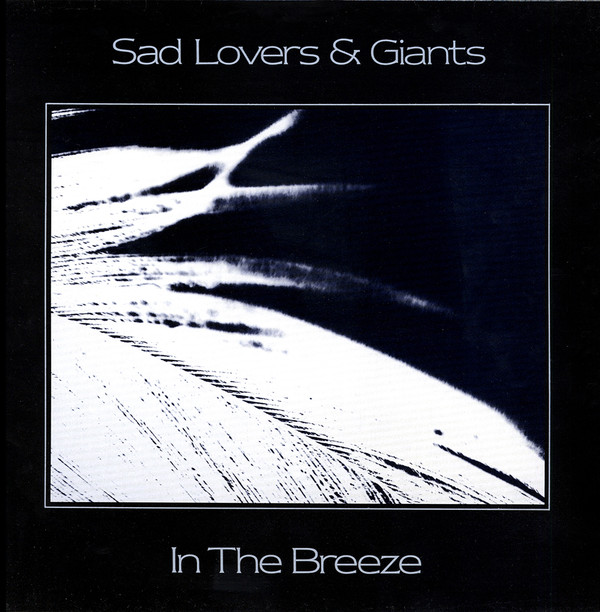
The compilation LP, In The Breeze, also features alternate versions of various tracks, in addition to material which wasn’t released anywhere else. Are there other recordings from those sessions which have gone unreleased?
In The Breeze was a mopping up exercise following the demise of the first line up and wasn’t a proper studio album, there are no additional unreleased tracks.
I’ve read that your new retrospective compilation, Where The Light Shines Through, is incredibly comprehensive. What exactly is on it; is it all-encompassing – and does it include the aforementioned alternate cuts?
The box set from Cherry Red was timed perfectly given our recent American tour and being asked to showcase at SXSW in Texas. There is a growing interest in the band and this box set fills a lot of gaps in the older fans collections of our material, as well as giving the new generation of fans something to get their teeth into if they’ve suddenly ‘discovered’ SLAG. There are five CDs, the first includes the singles, the second includes the first two albums, Epic Garden Music and Feeding the Flame, the third includes the first two albums by the second line up, The Mirror Test and Headland, the fourth includes Treehouse Poetry and the very hard to find Melting in the Fullness of Time. The final disc has everything else.
What was the impetus for releasing Where The Light Shines Through? And with its release, do you have any future plans?
Our current plans are to finish the new album and continue doing about five gigs a year but with so many enquiries about gigs we should be able to keep that up for the next ten years or so!

SL&G in LA 2016
I have one final question for you: how tall are each of you, and how would you rate your moods?
All of us are happily under five foot tall.

